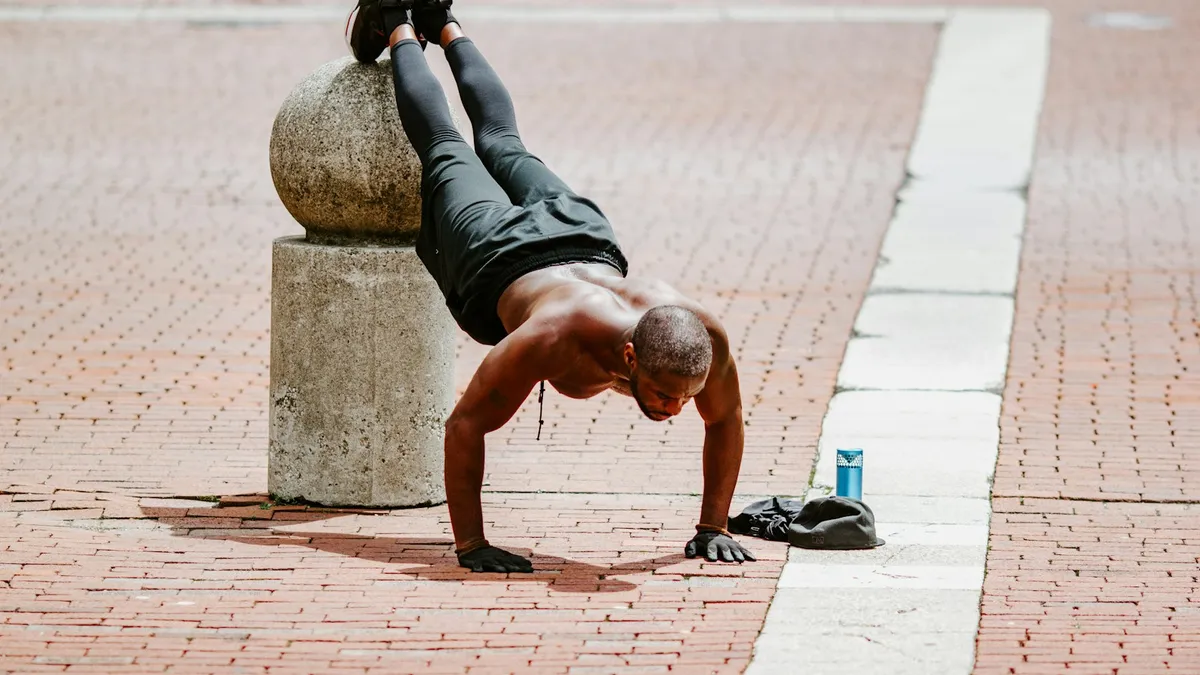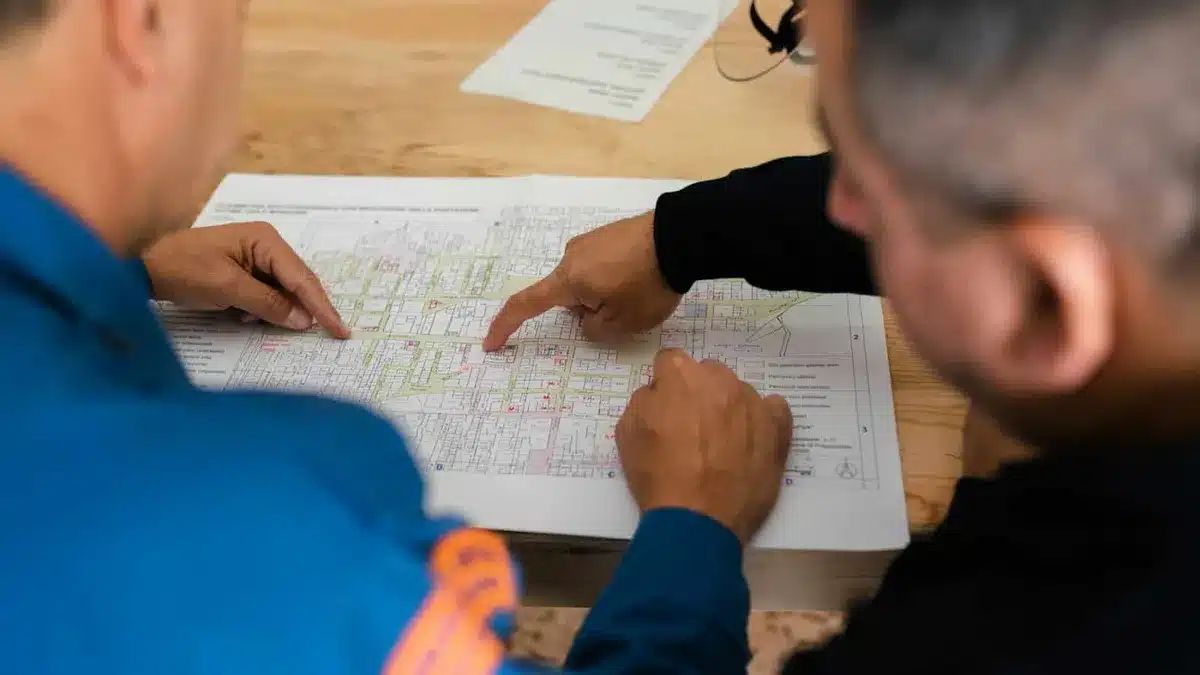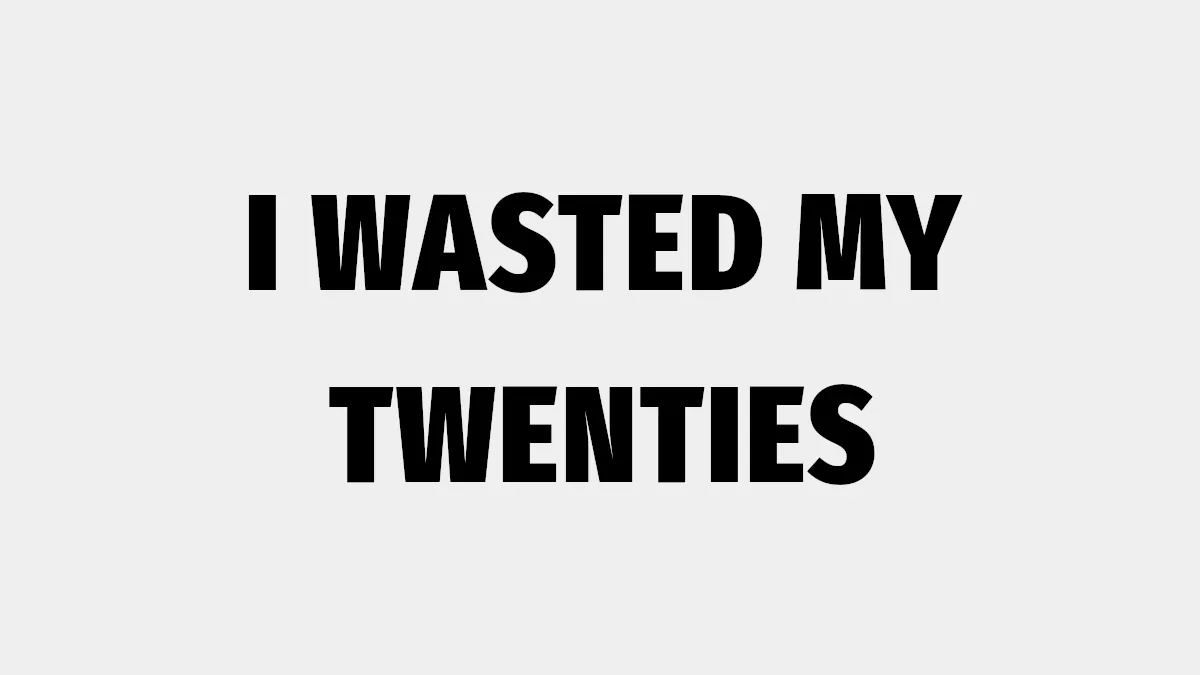Are you thinking about starting Monk Mode and looking for some inspiring things to do daily? You’ll find everything you need to plan out your period of self-improvement in this list of Monk Mode Ideas and activities.
Not sure how to plan your monk mode? Check out this guide with everything you need to know about monk mode. Your monk-mode activities don’t need to be the same as your goals for the year. These are the things you will work on for a short period (usually 3 months) of monk mode. You have the rest of the year (and the rest of your life,) to work on your life goals.
1. Wake Up Early
It’s called monk mode because you’re supposed to live like a monk, so you can’t wake up at 10 am and claim you’re still doing monk mode.
The time that you actually wake up isn’t that important. Sure, you’d like to wake up at 5 am every day and work out and start productive work before everyone wakes up but ask yourself if that’s really possible for you. Don’t set yourself up for failure.
The goal of monk mode is not to run yourself into the ground; it’s to improve yourself so that you come out the other end more robust and better equipt to take on the world. So pick a time a little earlier than usual, and be pleased that you wake up earlier. For example, if you usually wake up at 9.00 am, try 8.30. Give it a week or two, then try 8.00 am.
You can use plenty of strategies to wake up earlier, but the most important is to go to bed at the right time. For example, to wake up at 6.00 am and get eight hours of sleep, you need to be in bed at 9.30 pm (assuming it takes you about 30 minutes to fall asleep.)
2. Fast
Fasting is a popular practice when doing monk mode. There are different types of fast you can do depending on your goals. Here are your options.
There are plenty of benefits to fasting and intermittent fasting, according to many studies, including this one published in the New England Journal of Medicine. So it’s a monk-mode idea you should consider.
- Weight loss
- Increased focus
- Autophagy (the body’s way of removing genetic waste)
- Mental discipline
- Improvements to cardiovascular and metabolic health
Dry fast
Not recommended, this fast involves no food or fluid, and even short (half-day) fasts can be dangerous. Also, when you don’t drink any liquids, you severely limit the duration of your fast because you just can’t live long without water. So, even though it’s a real challenge, there are not many benefits to a dry fast because you can’t do it very long.
Water Only
This is a typical fast. No food or drinks except water. If you want a fast to challenge you and change your mindset, this is probably the one you should do. For your first time, 24 hours will be a good challenge and a great way to start your monk-mode journey.
No food
This fast is similar to the water-only fast above, except it’s not a zero-calorie fast. You can still drink coffee, juice, or anything else you like. If it’s your first time trying a fast, the option to drink something with calories will ensure you can finish your 24 hours.
3. Nofap
Perhaps the most common monk mode idea.
If you are trying to create a period of discipline and productivity, using pornography won’t help you achieve your goals. Most people who start monk mode will abstain.
4. Social Media Cleanse
Constant social media consumption causes many mental and emotional issues. It also sucks up your time. Everyone’s been in a situation where they get a notification and turn away from what they’re doing to see what it is. Forty-five minutes later, you realize you’ve been scrolling through Instagram and didn’t even check the notification.
Should you completely stop using social media? If you think you can’t, you probably need to. The easiest way is to delete all apps from your phone. Ensure you have all your passwords saved so you can log back in after your monk mode.
5. Quit Alcohol
Monks shouldn’t be getting drunk!
Seriously though, you know that alcohol will slow your progress, make you sleep and wake later, and reduce your productivity and performance. So there’s really no upside.
What about people who have a beer to relax at the end of the day? Surely that’s a good thing? Relaxing is good for us, but you should avoid all of the outside stressors during your monk mode anyway. Reducing socializing and online anxiety-inducing apps means you shouldn’t need that end-of-the-day beer anyway.
6. Quit Sugar
It sounds so simple, right? Don’t eat sugar for a few weeks, but what does quitting sugar really mean? Adding sugar to a cup of coffee or anything else you consume is a no-no, but what about products that contain sugar? OK, so no candy bars. What about BBQ sauce? That has sugar.
OK, so no adding sugar or eating anything with added sugar on the label, easy! Fructose is a type of sugar found in fruit. Does that count? Lactose is a sugar found in dairy. Does that count?
I’m not saying you should or shouldn’t eat fruit or drink milk when you quit sugar, but you should figure out precisely what you can and can’t eat before you start.
7. Use GTD
Anyone serious about productivity and managing their lives should use GTD. The learning curve turns some off or the setup required, but when you start monk mode, you should have all the extra time you need to set up GTD. You can set up GTD in just 30 minutes with this guide.
Monk mode is a valuable time to narrow your focus and make progress on your most important goals, but there will come a time when you need to make balanced progress across your life. You can’t do monk mode forever.
GTD will give you the toolset to ensure you don’t lose your gains and apply your success to the other parts of your life.
8. Read
If you’re reading this guide, you already read; well done. But you can use the time you gain during monk mode to dive deep into a few areas you’ve always wanted to read.
- Classics
- Self Help
- A new genre
- Philosophy
Check out this post with 135 books every man should read. The books are categorized into genres so they are easy to find, with must-reads in each category.
9. Learn a Skill
Perhaps you’ve always wanted to learn to code in python or learn photoshop or web design. Use this monk mode period to go deep and develop a skill you’ll use for the rest of your life. Commit to learning one skill, don’t flit from idea to idea. That’s the road of no progress. Coding for two hours a day for three months will leave you with real skills.
It doesn’t have to be work-related, though. Why not learn to juggle? Or an instrument or a new language? Three months of daily French classes will get you conversational.
10. Start a Business or Side Hustle
Monk mode is the perfect time to start a side hustle or business. Without the distractions and the added focus from fasting and eating right, you’ll have the time and energy to give your business idea a real chance. Here are a few ideas:
- A Youtube channel
- A blog
- Social media marketing
- An online consultancy
- A service using Fiverr or Upwork
11. Lift Weights
You could run on the treadmill or jump on the rowing machine or do a yoga session each day, but there’s something about lifting weights that fill you with forward momentum and confidence that you really can achieve your goals. You need that for success in monk mode.
So add at least two weight-lifting workouts into your week alongside yoga or whatever else you regularly do. If you already lift weights regularly, perhaps look into a yoga class. Your joints will thank you for it!
12. Cold Showers
There is plenty of evidence that cold exposure benefits the body and mind. Ideally, you should do 11 minutes per week in an ice bath, but we don’t all have ice baths in our backyards. A cold shower is the next best thing. It will be horrible at first, but you get used to it.
In 2018 I started taking cold showers and continued for 18 months. By the end, a cold shower was completely normal and didn’t cause any discomfort. The first hot shower I had was heaven, though! It was in a hotel in Thailand and made me appreciate how nice a hot shower is.
13. Prayer or Meditation
Another monk mode idea that monks do is prayer or meditation. If you’ve never tried it before or are worried that it isn’t for you, why not commit to trying it for a week and then reassess?
Try a gratitude practice:
- Sit somewhere quiet where you won’t be distracted
- Close your eyes
- Fill your mind with all the things you love in life
- Express thanks to God or the universe for those things
- Sit in the afterglow of your gratitude for a few minutes
- Open your eyes
This process should only take a few minutes. So what do you have to lose? Make it a part of your morning routine for success.
14. Write a Journal
Keeping a journal is another way to create a gratitude practice, but you don’t have to write a gratitude journal; there are so many journaling ideas to choose from. Find one that suits you.
- Write to yourself in the future
- Keep a bullet journal
- Create a gratitude journal
15. Create a Second Brain in Obsidian
With all the knowledge and skills you are learning during your monk mode and all the extra reading you’re doing, you need somewhere to store it all. Your mind, unfortunately, isn’t great at organizing and storing information. Using a second brain is a popular way to solve this problem.
A second brain is a digital system to store your knowledge and make it quickly accessible when you need it. It’s also often called personal knowledge management.
Obsidian was explicitly created to be a second brain, it’s free, and you can set up your second brain easily with Obsidian.
16. Switch to Linux
You might be wondering why you would want to switch to Linux. The privacy and security advantages are top of most people’s lists.
Linux is no longer the operating system for geeks and nerds. The new distributions and desktop environments rival anything Windows and Apple have to offer. If programming is something you want to do during your monk mode, Linux should also be interesting to you. With minimal distributions such as Arch or Gentoo, you can customize every aspect of your operating system, even compile your own kernel if you want.
The open-source nature of Linux and most of the software that runs on Linux means that you can customize almost everything.
If it’s your first time using Linux, it will take a little getting used to. So try dual booting a beginner-friendly distro like Ubuntu beside your current operating system so you can switch back if you don’t like it.






